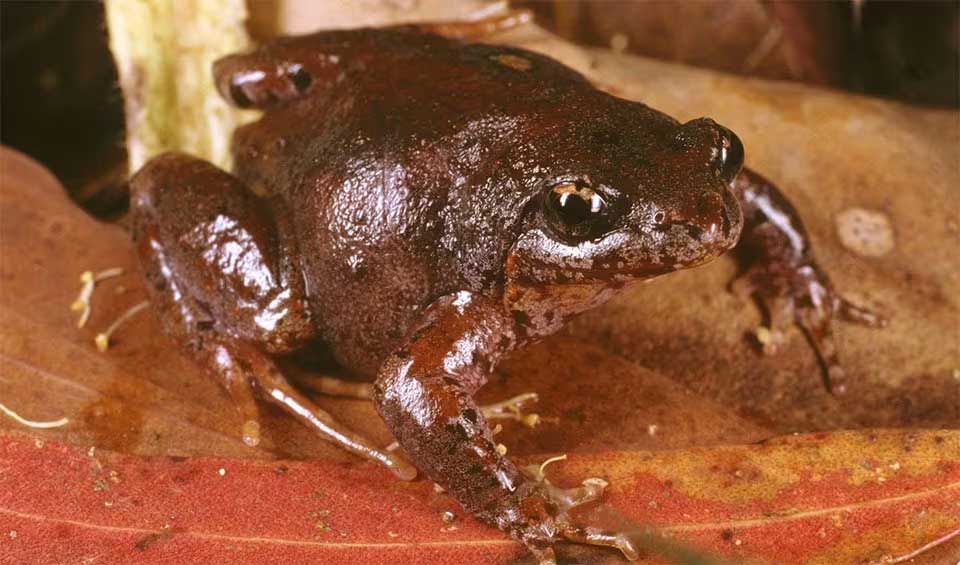This frog is found predominantly in Victoria and southeastern New South Wales. It thrives in various habitats, including damp forests, woodlands, grasslands, and coastal heathlands. These frogs prefer abundant ground cover, such as leaf litter, logs, and rocks, which provide essential moisture and shelter. They are commonly found near water bodies, including ponds, streams, and marshes, where they breed and forage.
As its name suggests, the Eastern smooth frog has smooth, shiny skin that varies in color from light brown to dark gray, often with a pattern of darker spots or stripes. This coloration helps the frog blend into its surroundings, providing camouflage against predators. Its underside is usually a pale, creamy color. The frog has a round head, large, protruding eyes, and a relatively short snout.
The Eastern smooth frog, an insectivore, has a unique feeding strategy. It primarily feeds on small insects, spiders, and other invertebrates. But what’s fascinating is its sit-and-wait strategy. It remains perfectly still, blending into its environment, until unsuspecting prey comes within reach. In a swift motion, it snaps up the prey with its sticky tongue. This controls insect populations and showcases the frog’s remarkable ability to adapt to its environment, making it a truly intriguing species to study.
The Eastern smooth frog is predominantly nocturnal, emerging at night to hunt and avoid daytime predators. During the day, it seeks shelter in moist, concealed locations to maintain hydration and evade predators. This frog is well adapted to its environment, with smooth skin that helps reduce water loss and enhances its ability to absorb moisture directly from the environment. Its small size and cryptic coloration provide excellent camouflage, making it difficult for predators to spot.
Distribution
 Australia
AustraliaAnything we've missed?
Help us improve this page by suggesting edits. Glory never dies!
Suggest an editGet to know me
Terrestrial / Aquatic
Altricial / Precocial
Polygamous / Monogamous
Dimorphic (size) / Monomorphic
Active: Diurnal / Nocturnal
Social behavior: Solitary / Pack / Herd
Diet: Carnivore / Herbivore / Omnivore / Piscivorous / Insectivore
Migratory: Yes / No
Domesticated: Yes / No
Dangerous: Yes / No




